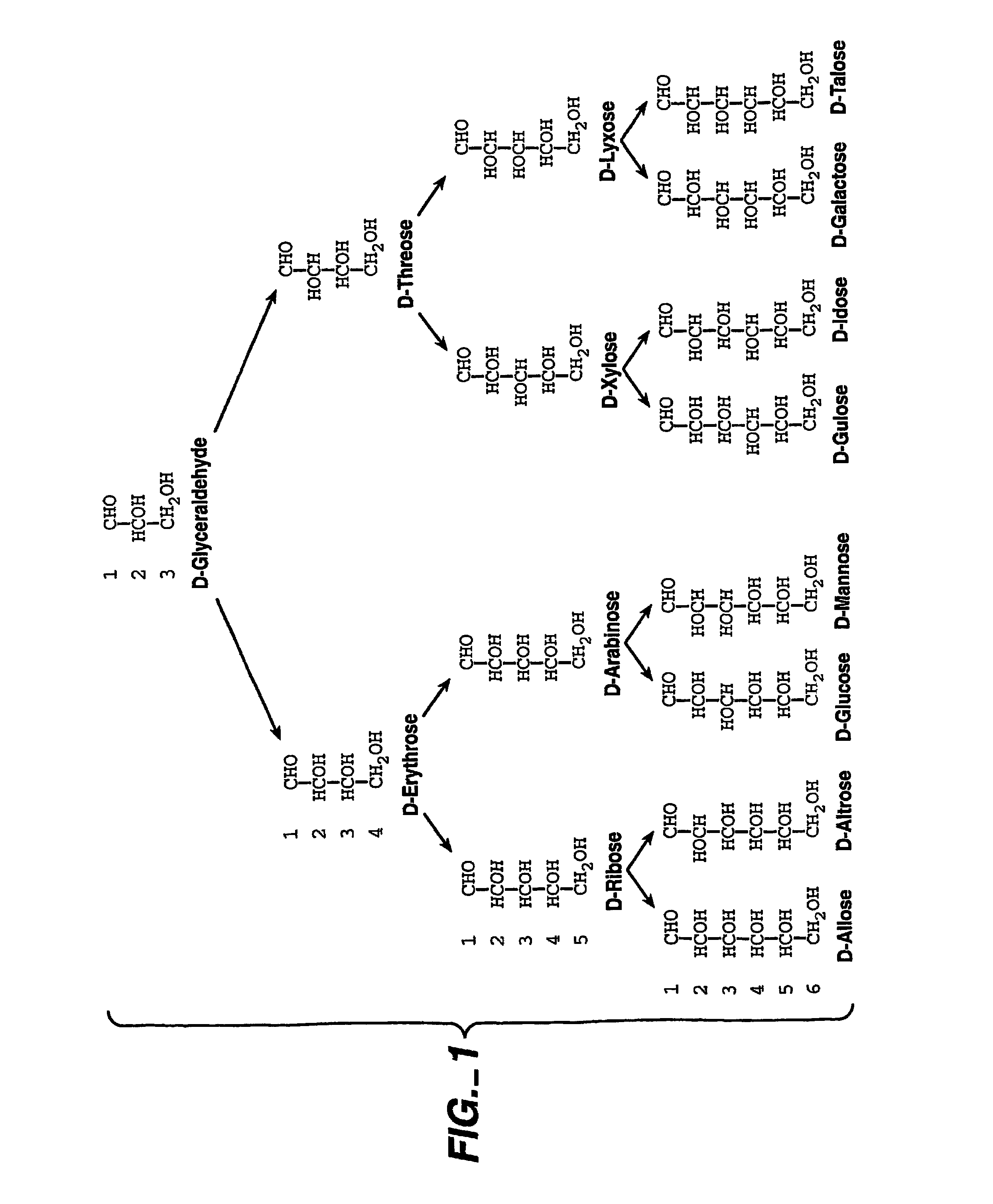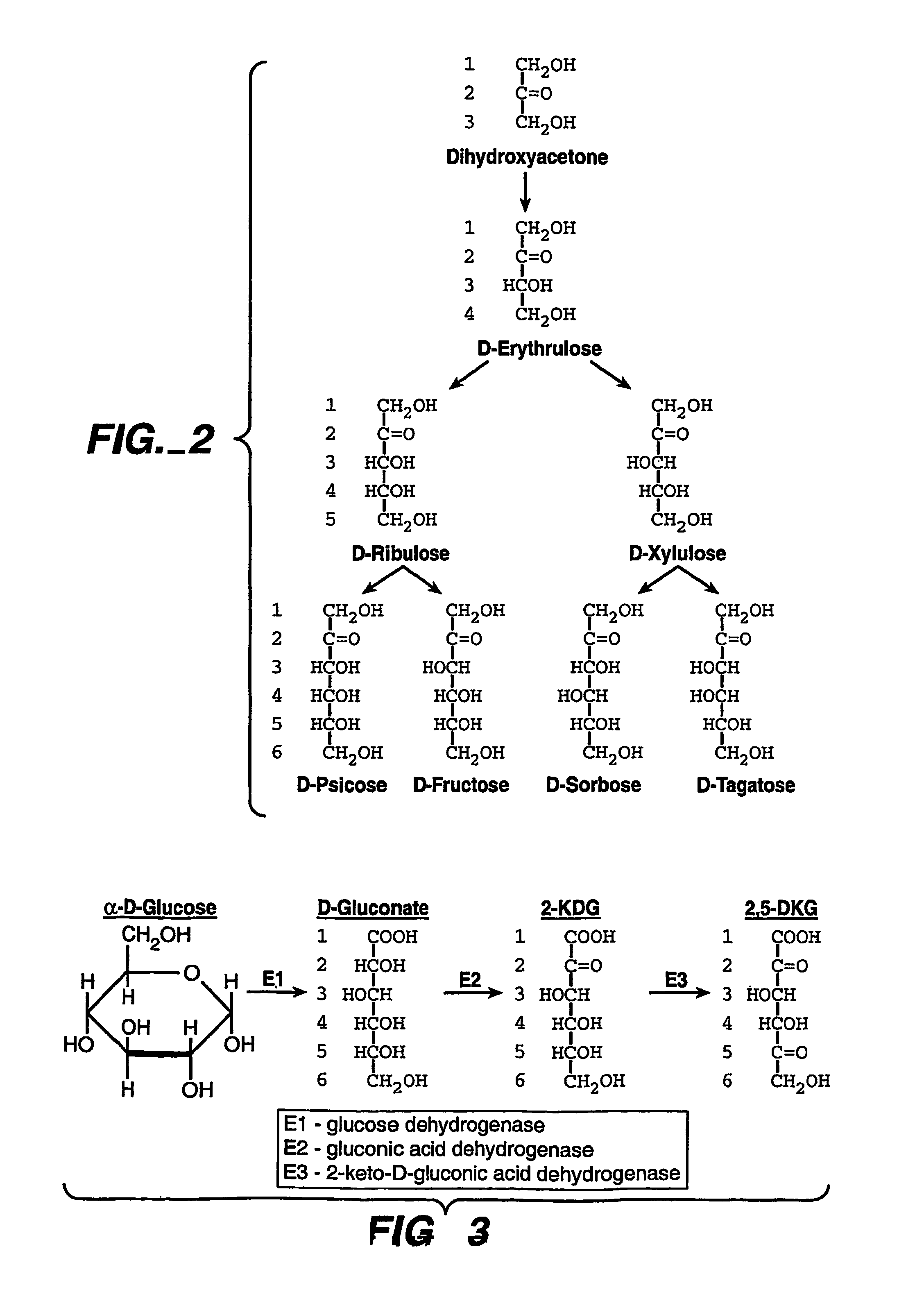Browning agent
a technology of browning agent and browning liquid, which is applied in the field of browning agent, can solve the problems of not fully developing browning color of food, unpalatable to the average consumer, and high surface temperature necessary to achieve conventional oven browning
- Summary
- Abstract
- Description
- Claims
- Application Information
AI Technical Summary
Benefits of technology
Problems solved by technology
Method used
Image
Examples
example 1
[0068]In a first assessment of the ability of the browning agent to effect a brown coloration, samples of the respective compounds at pH 5.0 and at the same concentrations were compared. The more oxidized the sugar, the more superior it is for the browning effect. Glucose, and differing oxidation products of glucose were tested for browning effect in pineapple juice (Dole Food Company, Westlake Village, Calif., USA) diluted to one-tenth strength and by heating the samples to 90° C. for 3 hours. A sample from a freshly opened can of pineapple juice was mixed with a sufficient amount of the purported browning agent to achieve a concentration of 100 mM. Pineapple juice was useful in that it endogenously provides an amine source. The mixture was then diluted 1 to 10 with water to achieve a 10 mM concentration. The resulting solution was heated to 90° C. and then maintained at that temperature for a 3 hour period. The substrate samples were then visually examined and assigned a degree of...
example 2
Carbohydrate Trials (Raw Potato Slices)
Methods and Materials
Materials and equipment used in this study are listed above. The methods and experimental design are summarized below:
1. Experimental Browning Agent Solutions
[0072]Solutions were made the day of testing and kept refrigerated until the test evaluations began. At the time of testing, the solutions were all removed from the refrigerated conditions and placed into an ice water bath to keep the solutions all at the same temperature and to keep the 2,5 diketo-D-gluconic acid (DKG) solutions below 40° F. to prevent any decomposition. Table 2 lists the solutions prepared and defines their composition.
[0073]Solutions A through D were prepared from stock solution E. Solution E was prepared by dissolving 50 grams per liter 2,5-DKG is deionized water. References to “% DKG” in Table 2 refer to a specified dilution of the stock solution E (for example, 100% DKG means at 50 gm / liter). Solutions F and G were prepared from a commercially a...
example 3
Protein Trials (Turkey Slices)
Methods and Materials
[0095]Materials and equipment used in this study are as described above. The methods and experimental design are summarized below:
1. Experimental Browning Agent Solutions
[0096]Solutions were prepared exactly the same way as in the carbohydrate study and the same solution compositions were evaluated (Table 2).
2. Method for Dosing the Browning Agents
[0097]Similar to the raw potato slice, it was determined that 0.2 ml of solution (e.g., water, browning agents, etc.) was sufficient to cover (wet) the surface of the precooked turkey is slice. The solutions were applied to the center of the turkey slice using a graduated pipette. The dose was allowed to spread across the turkey slice on its own. This dosage level (0.2 ml) was used throughout the entire study.
3. Experimental Design
[0098]Each of the following tests was repeated three times.
[0099]
TABLE 8Experimental Design for Turkey Slices, no lysine addedPositionTimeTest Sample15 minBlank2...
PUM
 Login to View More
Login to View More Abstract
Description
Claims
Application Information
 Login to View More
Login to View More - R&D
- Intellectual Property
- Life Sciences
- Materials
- Tech Scout
- Unparalleled Data Quality
- Higher Quality Content
- 60% Fewer Hallucinations
Browse by: Latest US Patents, China's latest patents, Technical Efficacy Thesaurus, Application Domain, Technology Topic, Popular Technical Reports.
© 2025 PatSnap. All rights reserved.Legal|Privacy policy|Modern Slavery Act Transparency Statement|Sitemap|About US| Contact US: help@patsnap.com


